What Does It Mean to Sample a Song
What Does It Mean to Sample a Song
What do Queen, Michael Jackson, and Marvin Gaye have in common? Their music has all been sampled, 100's and if not 1000's of times.
Sampling is a key part of electronic, hip-hop, and music in general. No doubt you've heard a record containing a snippet of another's music.
But learning the art form is a process that involves understanding complicated tools, knowing where to look, and having an ear for good material. It's a craft that needs time to master.
Don't worry – in this guide, we are going to cover:
- everything you need to know about what sampling is
- simple ways to get started with sampling
- the tools used to sample music
- where you can find good quality samples
- legal considerations and copyright infringement
Let's start with the foundations! 👇
New to music production?
Watch our free masterclass on how to learn electronic music production the smart way (without months of confusion & frustration)
What is Sampling?
If you're new to the world of music (or at least computer/electronic music), sampling can be summed up as the exploiting of recorded audio in a new composition and recording, often with differences from the original recording.
The original sample may or may not be recognizable, depending on the artists' intention to either pay homage to the sample or to entirely recontextualize it.
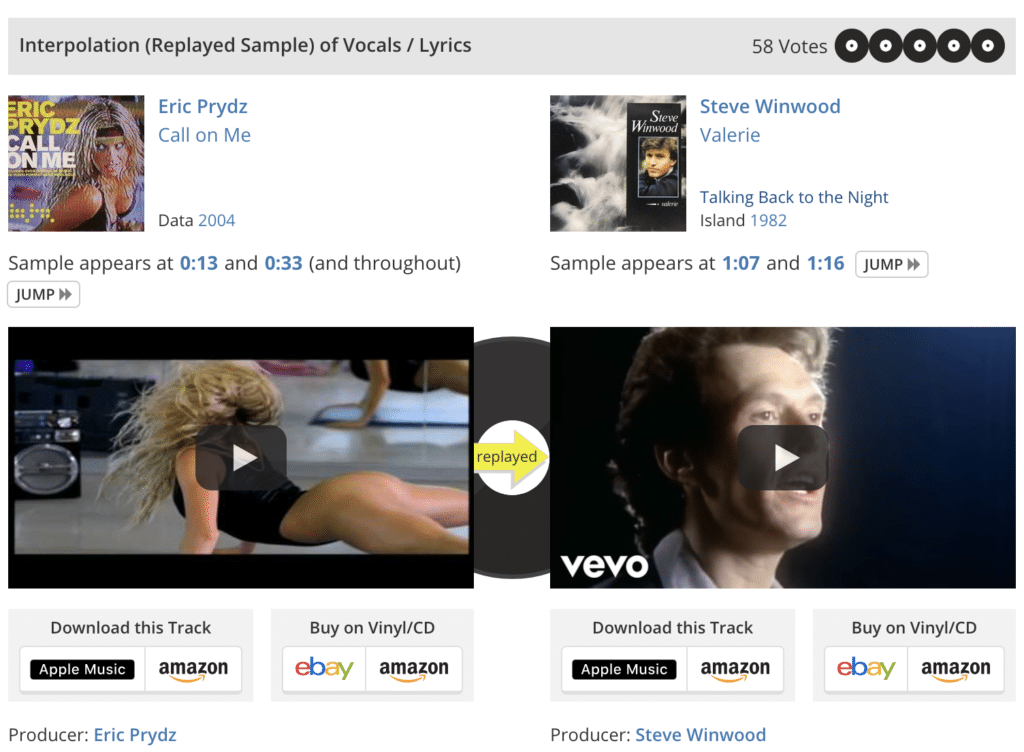
Despite a lot of debate within the larger musical community as to whether sampling is a legitimate art-form, most people today would consider it a unique form of creative expression, with a large number of the top 40 pop and hip-hop tracks paying homage to the past through the use of a sample or two.
Everything is a Remix
Many producers, especially those getting into EDM, start off their production journey thinking all sounds have to be created from 'scratch'. That was the case for me, loading up FL Studio and trying to process bad kick drums into good ones for the sake of 'skill'.
Yet it's simply not true. While synthesis is a massive part of producing music (true in genres like trap, dubstep and future bass), sampling is an equally important skill within the broader art form of music production. Why? It yields interesting and unique results that you can't get with synthesis alone.
Beautiful layers of instruments, weaving in and out of each other, recorded in exact ways. Those textures and tones would require unnecessary amounts of effort to create the same result, only to use it in a different context anyway.
It's using something old in a completely new way – like you're finishing a painting started many years ago.
It's been around for a long time, and only now is the art form being understood by the general public as it should be. If you haven't watched this great TED talk from Mark Ronson on how sampling has impacted music, you're missing out.
Today, sampling is ubiquitous. But it hasn't always been this way.
History of Sampling
As we mention in our Ultimate Guide to Remixing, the earliest form of sampling was something obscurely-named musique concrète, which as you can probably imagine translates from French to 'concrete music'.
Once the tape machine was invented, artists chopped up parts of the tape by 'splicing' different parts to create a new composition. It was the first time recorded audio was used as source material rather than a new recording. This was still very early days, and it wasn't until the late 1960's that it happened on a mainstream level.
Engineers would mix, rearrange, and rebuild tracks to suit different audiences. These pioneers made stripped-down instrumental mixes of reggae tunes, which started out simple but became more complex over time through the addition of effects like reverb and delay.
This created new genres, like dub and early riddim (no, not the brostep type). These techniques were then generously shared with hip-hop artists – giving birth to a completely new sound.
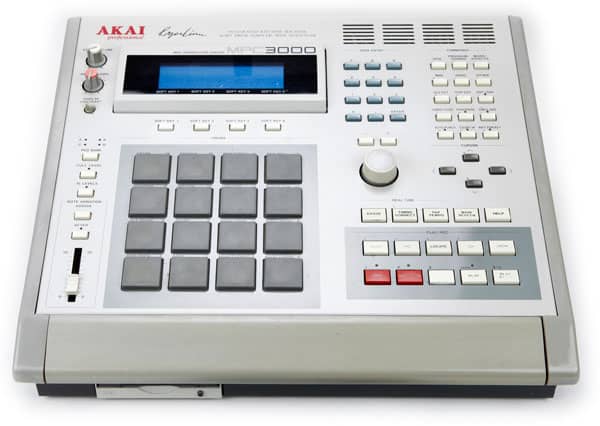
The 1970s and 1980s saw an array of new instruments, like the Fairlight, Akai's MPC range, sample-based drum machines like the Linndrum, and a whole lot more.
Yet it was the MPC that arguably had the biggest impact on the modern form of sampling we know today, with artists such as J Dilla and DJ Shadow using the tool in unprecedented ways.
From here on in, it impacted hip-hop, electronic and pop music for good.
Iconic Examples
With the advent of sampling, what can we point to in order to showcase its historical impact on music? Here are some key examples of tunes using a sample that you may or may not recognise, pulled from the sampling info website WhoSampled.
Vanilla Ice – Ice Ice Baby
Sample: Queen – Under Pressure
Look, many of you probably know this one. When anybody talks about sampling, this is usually the example that is brought up. It's a simple case of sampling, yet arguably the supreme example.
Eric Prydz – Call On Me
Sample: Steve Winwood – Valerie
https://www.youtube.com/watch?v=QQSYo_pC-QA
This has got to have been the first electronic song I heard that used such an iconic and obvious sample. A true classic and a rite of passage for all electronic music producers.
Kanye West Feat. Jamie Foxx – Gold Digger
Sample: Ray Charles – I Got A Woman
A more pop/hip-hop example would be this track, where the hook in the chorus is sampled, but the whole track doesn't feature the sample. You've definitely heard this before.
J Dilla – Don't Cry
Sample: The Escorts – I Can't Stand (To See You Cry)
J Dilla is a true pioneer of sampling, due to his unique way of chopping in a free and unquantized way. Don't Cry is one of the best examples of this, allowing the original sample to play before unleashing his skills on the MPC.
In fact, these very techniques inspired a new generation of hip-hop beats by producers who used samplers in similar ways.
What Can Be Sampled?
When most people (normies) think of sampling, they think of one's music being used in another's, usually in a way to pay homage. This is evident in the popular examples above.
But sampling encompasses a much broader art form in practice. It can be used in chill hip-hop beats, in catchy pop music, and in beautiful sample collage tracks that really push the envelope of sampling. The possibilities are truly endless.
Firstly, sampled music can be chopped, screwed and manipulated in ways so that you can't even tell what the original song was. Many songs out there probably use samples without you even knowing. Even Justice has even admitted to using a large number of samples on their debut record, most of them uncleared too.
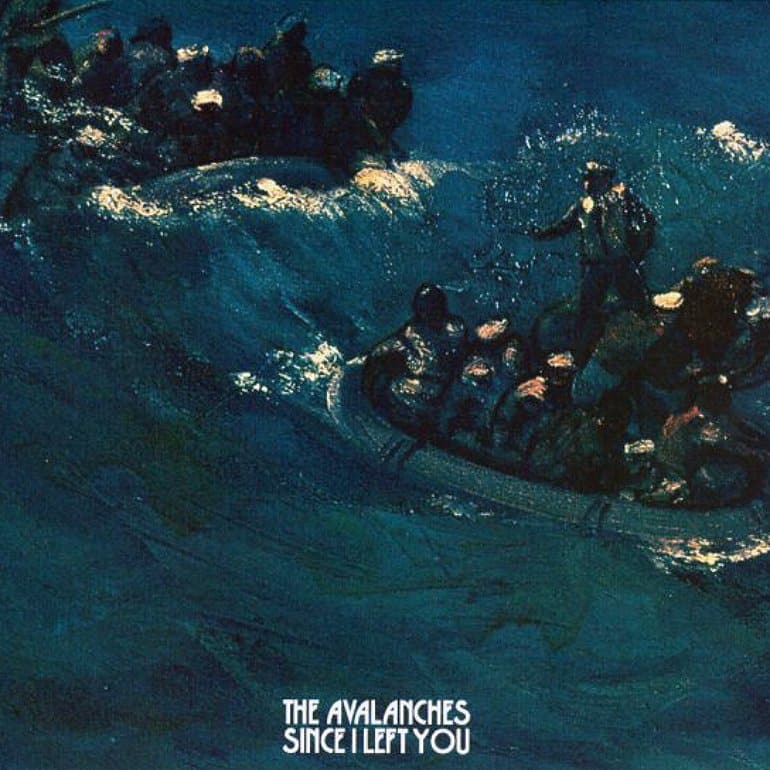
Beyond that, full recordings of music aren't the only options for sampling. In a liberal view, any audio is fair game, and it's something a lot of artists take advantage of (myself included).
Hip-hop and electronic artists have sampled film dialogue, documentaries, YouTube clips, even computer system sounds, and it's often resulted in something really interesting and unexpected for listeners.
Combine that with the advent of digital technology – using samples shifted from relying on pre-recorded, usually non-royalty free music to companies creating dedicated sample packs with royalty free sounds for producers to use.
These sounds were arguably better, because they came from a higher quality source, had a specific use (a one-shot clap sample vs ripping a clap from a full track) and could be used without risk. Now the techniques combined with the resources allowed sampling to reach a tipping point, democratizing the practice.
Bringing it forward to modern times, this is something that services like Splice and Noizz take advantage of, providing sample packs of individual sounds, loops and construction kits to use in your own production, and allowing you to select the exact sounds from 1000's of packs you want.
More than that, the variety of sounds available in astonishing. You can get field recordings, piano sounds, drum hits, foley noises, synthesized FX, sampled phrases, pretty much anything. Sampling has reached new heights, and it could go anywhere in the future.
Where Can I Find Samples?
Now that we know what sampling is and what can be sampled, where do you go to get them? Depending on what you're looking for, there are a lot of sounds out there waiting to be used, whether they were intended to be used as a sample or not.
Here we will cover where you can find any sort of sample, from completed music to sample to individual drum samples or obscure audio recordings.
If you're after a more comprehensive list, check out our free samples article.
Vinyl/CD/Files
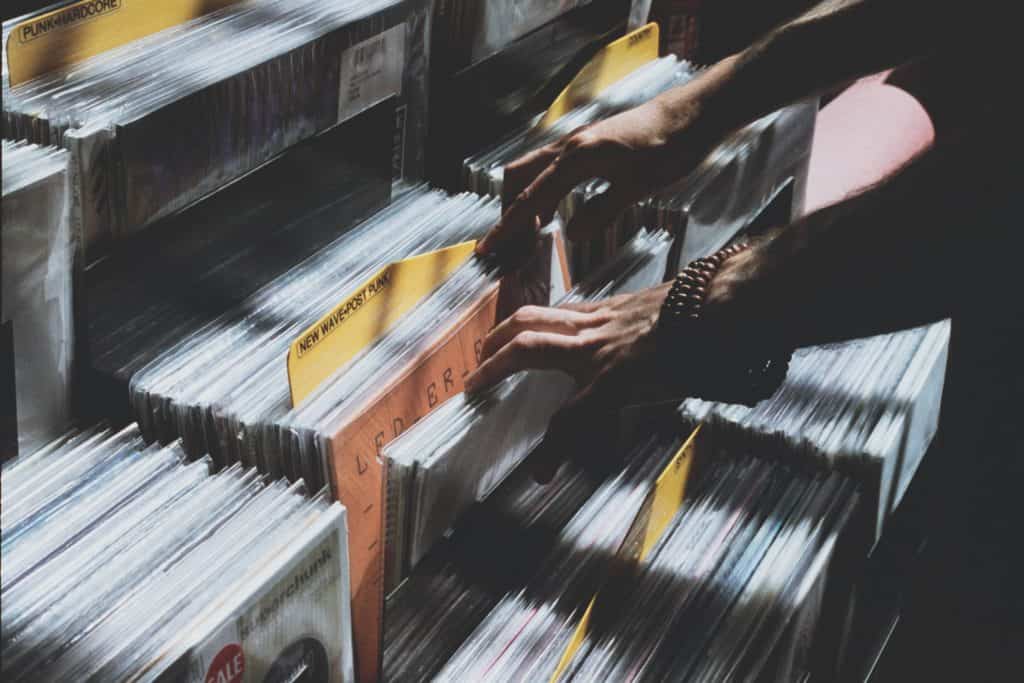
Everyone has some library of music somewhere – it's simply a matter of putting it to good use. But using the medium as-is is the most common form of sampling.
Where it used to be exclusively on vinyl, you can now sample from any sort of digital audio medium, whether it's CD, Spotify, your iTunes library, the radio or anything off your hard drive.
If you're sampling from vinyl, you'll need a turntable with audio out and an audio interface to record it. Then just create a new audio track in your DAW, change it to the correct input, and hit record.
Additionally, there might be a lot of imperfections in the recording. Sometimes these add a more human feel to the sample, but if you're not a fan, you can use something like iZotope RX7 to clean up the audio.
If you're using a CD or files, you can drag these straight from Finder or Windows Explorer into your DAW, and process from there.
YouTube
For obscure and interesting sounds, YouTube is a gold mine. According to statistics, 300 hours of video are uploaded every minute. And with 300 hours of video material comes 300 hours of audio. So there's sure to be a wide variety of music, audio, sound or whatever you need.
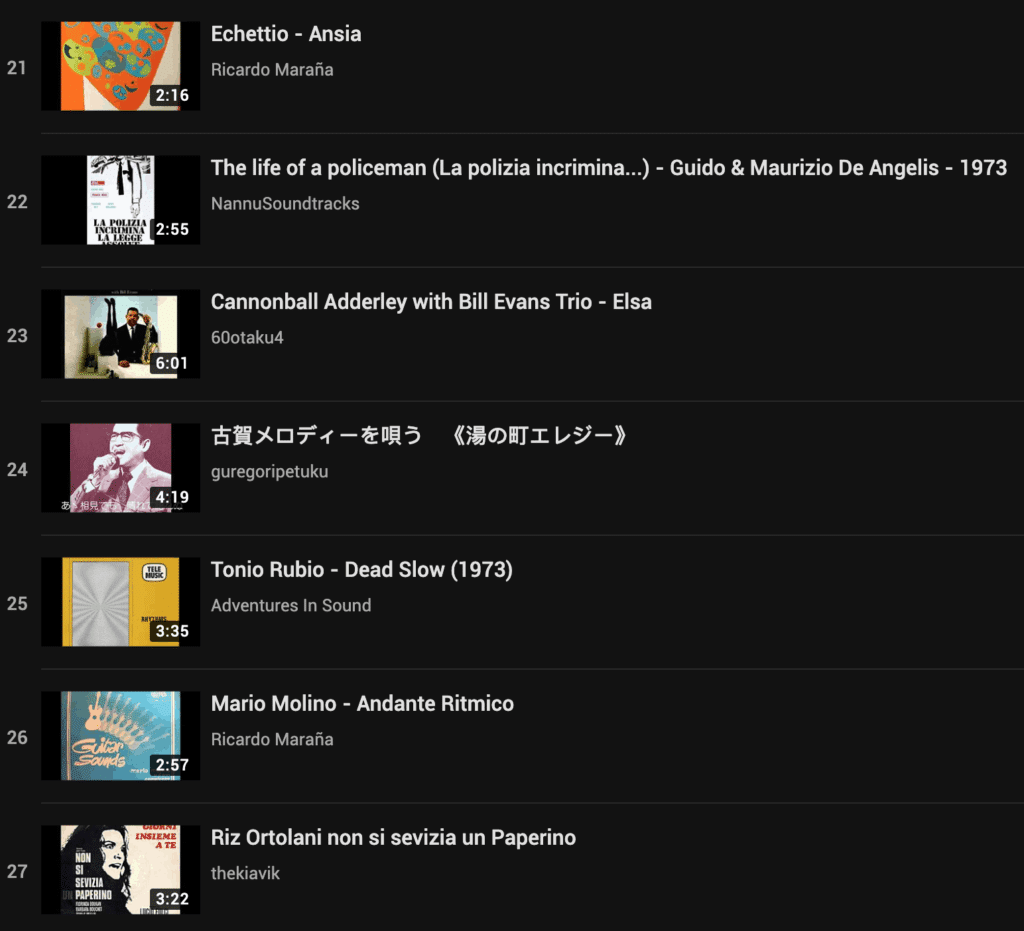
A few tips for YouTube:
- If you're digging for music, try finding a few great playlists of music in a certain style, you'll sift through a lot of garbage that way
- Use the advanced search tools to find obscure sounds, especially recently uploaded stuff. A lot of popular sample playlists have probably been overdone.
- If you are using samples of songs from a playlist, try using them in a unique way that nobody would have tried before.
Google Search
Yes, you can search for music and sounds to sample with Google. Shock horror. But the power is in the method here. Ever wish there was Google Images for sound? Well there is, sort of.
Use the following query to find wav files containing a certain search term:
?intitle:index.of? wav sample
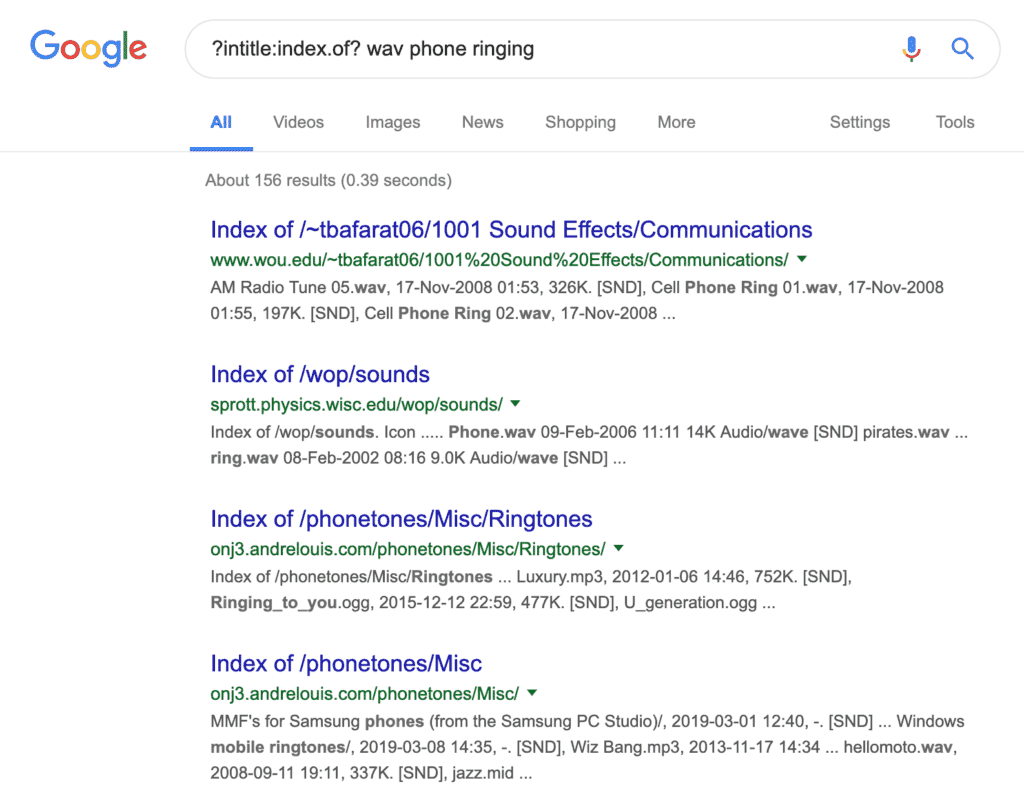
Replace 'sample' with a phrase of your choice and you'll be well on your way to finding all sorts of weird and wonderful sounds.
Apart from this cool trick, simply search for anything sample-related to find music and sound to sample. Here are a few example terms:
- music to sample
- audio sample websites
- sample playlists
- list of samples
- free sounds
- free sample packs
- download samples
- sample resources
Sample Websites
If you want to find some curated resources, check out these websites. For obvious legality reasons, many of these sites don't offer the samples or sounds as downloads, but act as a list of quality finds.
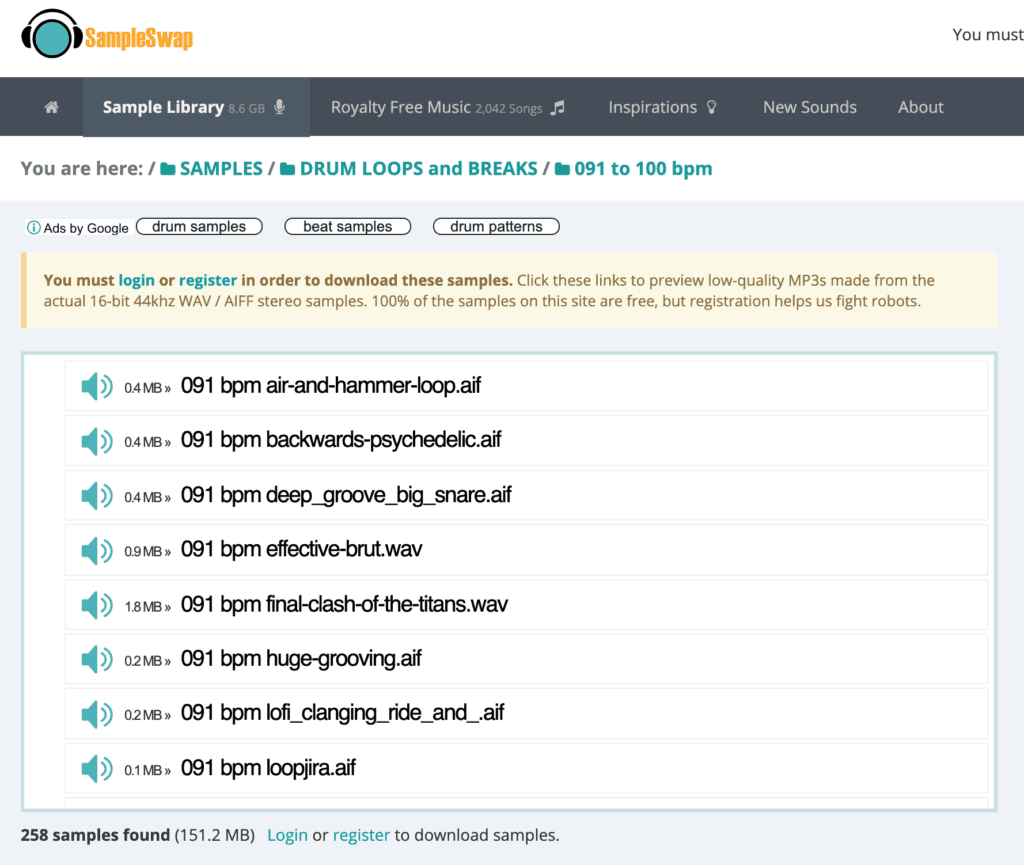
- Whosampled.com – shows songs that have been sampled in other works. Doesn't contain downloads of said songs because they are typically copyrighted pieces of music.
- Splice – contains a massic library of royalty-free sounds from 100's and 1000's of packs from a variety of companies.
- Noizz – Splice competitor.
- Sounds.com – Also a Splice competitor by Native Instruments.
- Freesound.org – A website containing a large library of free sounds. These are usually intended for a wider variety of artistic purposes beyond music (such as film and game design), so there is some interesting stuff on here to use.
- SampleSwap – Another free website containing a massive library of sounds (over 8GB). You can also upload your own original samples in turn.
- MusicRadar's Free Samples – MusicRadar has a great collection of free packs, depending on what kind of music you want to make.
Reddit is a goldmine, especially for free sounds. Why? Because a dedicated community is a great way to find quality sounds that not everyone is necessarily using. Once again, not all of these have download links included and are simply showcasing good material to sample. Here are a few of the best subreddits for sharing samples and sounds:
- r/drumkits – One of my personal favourites. A lot of producers upload their free kits here to download, typically containing (you guessed it) drum loops and one-shots. Great for hip-hop oriented music
- r/hotsamples – A great resource for sharing music to sample. No downloads are linked for obvious reasons.
- r/samplesforall – Any kind of sample. Music. Drum kits. Drum machines. Audio. You name it, it'll be there.
- r/youshouldsamplethis – For obscure non-melodic samples like film dialogue and random audio snippets.
- r/freesounds – Includes free sample packs among presets and other production freebies.
- r/samplehunters – For finding samples contained in other songs.
- r/vintageobscura – Very obscure record sharing. Lots of fun.
- r/vinylcollectors – Pretty self-explanatory.
Other
Apart from all these methods or resources, there are a few interesting sampling or samplable resources I thought I would include in here:
- Forgotify – finds songs with no plays on Spotify at random. Great way to find obscure and rare music to sample.
- Archive.org – AKA the Internet Archive. A lot of music and audio can be sourced from the massive community of uploaders, all without any copyright.
How Do I Sample Something?
Now that you've got some material to work with, you'll probably be wondering where you go from here.
The methods have certainly evolved over the years, and where MPC's and hardware samplers ruled, DAW's and digital methods are now the norm. That being said, a lot of the workflow carries over between platforms or methods, so we'll explain a few general approaches to sampling with examples from the past.
The General Approach
The general approach to sampling would involve taking a portion (or more) of audio, whether it's a piano, guitar, drums or multiple things happening at the same time, and looping it.
This loop can be pitched, chopped and arranged in a completely new way. In the past, this workflow would be achieved by using something like an MPC to scan through a track and find a portion of audio to sample and loop, and then finding different start points around the track to jump between, creating a new sort of phrase.
The sound can be processed with effects like EQ to deliberately isolate a portion of the audio. For example, if you want to add your own drums over a sampled track, you may want to high-pass it to remove the kick drum and rhythmic elements. Like the bassline? Grab a low-pass and filter it down low to get just that part.
This can be replicated in modern DAWs by importing audio into a digital sampler, like Ableton's Drum Rack or simpler, and assigning slices to different MIDI notes.
Alternatively, if you want to get more precise, you can chop the audio directly in the DAW's sequencer, allowing you to get more precise with timing and see things visually over time.
Beyond that, sampling is an art that can be adapted to your workflow. If you'd like to see how other artists sample, check out this great resource from Red Bull Music Academy.
Sampling in Ableton Live

Ableton Live is a sampling powerhouse, with the DAW including three main instruments dedicated to working with samples, in addition to its powerful raw audio processing tools with warping and the like. Depending on which option(s) you prefer, you might want to save a template that is ideal for your workflow.
Working in Audio
Working in the arrangement view with audio in Ableton is the best place for forging magical ideas.
You can warp a sample by enabling the warp button on the clip. Once done, you can click and draw in warp markers to adjust the timing of the sample to the current tempo.
You can also do manual chops from a selection of audio by using Cmd + E (Ctrl + E on Windows) to split a clip in two. Then you can rearrange the parts and adjust each slice individually, getting a very smooth and precise phrase from any piece of audio.
If you're using one shot samples, even if you aren't chopping, the transposing tools allow you to tune drums, melodies and anything to whichever pitch you want. Also, the fades can help to tighten up the sounds and change them into something completely different.
Working in MIDI
As I mentioned earlier, there are 3 main tools you can use to manipulate samples in Ableton Live: the Drum Rack, Simpler and Sampler.

Simpler has a great new function as of a couple of years ago, where you can activate 'Slice' mode and it will chop the audio loaded in into specific intervals. The slice mode allows you to trigger each slice on a different note, like a Drum Rack. You can set it to 'Trigger' so that it plays after you've held the note in, or 'Gate' which stops it from playing once you let go. Beyond that, you can slice it by the transient, which analyzes the sample for definitive 'sections' in the audio, you can chop by a defined beat value, by splitting the sample into a number of even sections or by manually assigning slice markers.

By the way, right clicking on the sample with Slice mode on will allow you to 'Slice to Drum Rack' if you prefer that type of workflow.
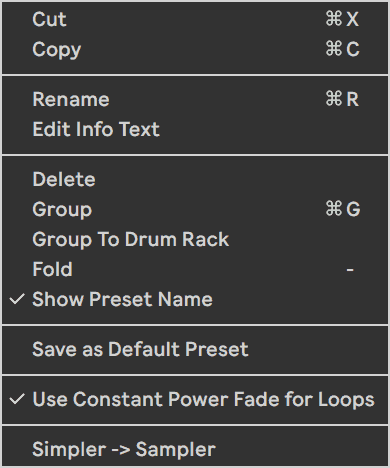
The big brother if Simpler is the Sampler. Funnily enough, it has a lot more features (like more looping modes) but it doesn't have a native chopping or slicing function like Simpler. You can replicate it by using Zones up the top, but it's a bit of a workaround.
So if you're looping, taking one segment, or doing complex modulation, Sampler is the better choice, but best to stick with Simpler if you want to slice things up. You can always convert between the two by right-clicking on the title and selecting 'Simpler > Sampler' or vice versa.
If you haven't checked out our full guide in under 15 minutes, give it a watch. We cover every aspect of Sampler, allowing you to use it to completely mangle and screw the original audio into completely new textures.
Want to learn more about Ableton Live? Check out our beginners guide here.
Sampling in FL Studio
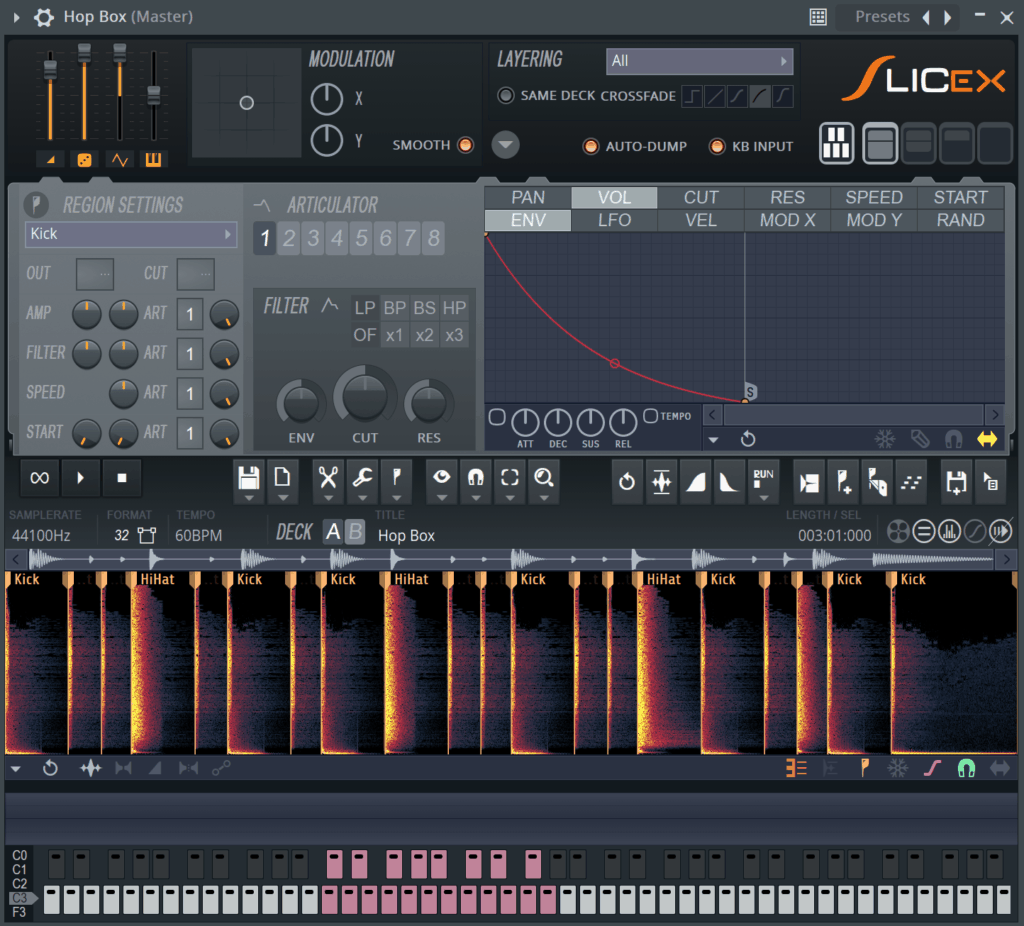
FL Studio also has some great ways of working with samples, and they're fairly similar to Ableton Live. If you're new to FL Studio and don't have a clue where to begin, check out our beginner's guide. Once again, you may want to customize your template based on your preferred workflow.
Fruity Slicer/Slicex
If you've seen our FL Studio Plugins article, you'll know that Slicex is a super powerful tool with lots of editing capabilities. Although it's the strong point is with chopping drum loops, it can be a great way to chop any kind of sound.
To give you a general idea, it chops each sample into a region and each region has individual processing capabilities. One of these features is the articulator, which is a filter envelope that accentuates certain sounds.
For a full guide to Slicex, check out Internet Money's tutorial.
Edison
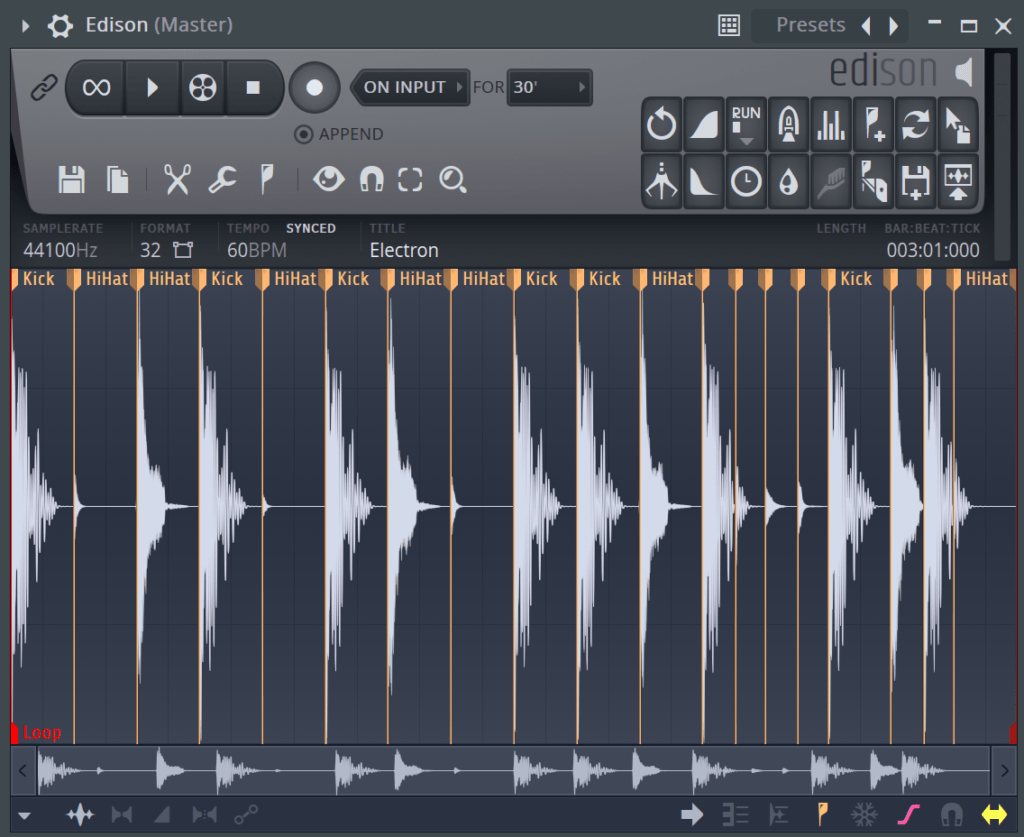
Edison is an endlessly powerful way to process audio, and it's perfectly suited to sampling. You can delete parts you don't need, add fades, process with FX and add markers for later slicing, all inside the one plugin.
My personal favourite is the 'Blur' tool, which turns any audio into a wash of sound, which has the added benefit of disguising the sample besides sounding lovely.
Slice Tool in Playlist

Similar to working with audio in Ableton, the slice tool (pictured 4th from the right) allows you to chop audio into different components that can be rearranged, like a collage. Simply click and drag with the tool selected to cut a piece of audio into two.
To take full advantage of this feature, you can right-click on each sample to 'Make unique' and adjust each slice individually. Now you can treat each slice like its own sample, adding fades, stretching, changing pitch and adding envelopes.
Sampling in Other DAWs and Tools
Of course, Ableton Live and FL Studio aren't the only DAW's that you can use to sample music. 99% of modern DAWs should be able to handle it in one way or another. Here are some resources explaining the processs of sampling in other popular DAWs:
- Logic Pro X
- Pro Tools
- Reason
- Bitwig
- Audacity
Legal Stuff and Sample Clearance
Now I hate to be the bearer of bad news, but all the techniques and resources we've covered so far have a condition in their use, and that condition is that you must legally have the right to use that audio.
I left this part to last because otherwise, I would have to mention it a hundred times over, but it does need to be considered and it's something you've most likely about heard before.
If you plan on releasing a track with a sample you don't have rights to, you risk legal trouble and you technically are infringing copyright. So, you might be thinking, "Simple, how do I get the rights to use it?"
Well, it's a complicated, timely, and costly process that often ends up in nothing happening, which is why a lot of artists sample anyway, preferring to ask for forgiveness and not permission.
I can't recommend this strategy, but the chances are that you probably won't get caught if you do this, unless you make a lot of money from the use of the sample. Furthermore, depending on how you use the sample is another matter, which we'll unpack a bit more now.
The Latest in on Copyright Law
This talk from lawyer and artist Abid Hussain at Ableton Loop is the best explanation of copyright law in relation to music I've seen to date.
In summary, there are 3 court cases in the US that have given 3 separate precedents for how sampling should be treated, which makes it very confusing and contradictory.
The first case says that sampling is always infringement, no 'if's, 'but's or 'maybe's. However, the second case argues that only if it is substantially similar, then it constitutes copyright infringement. Lastly, if the work using a sample is transformative enough (recontextualizing the sample), then it won't be classed as copyright infringement. Confusing, right?
Basically, it's not clear, but it's still very risky, especially if the original is recognisable. But people sample differently, which is why it's not always the same answer. These cases could develop in years to come, and are always open to change with changing laws and new sampling controversies.
Regardless of whether you are in the US or not, there are a lot of similarities between the courts in Western countries. That being said, before proceeding with releasing tracks containing a sample, you should do the research to make sure your country has similar laws.
A Safer Way to Sample

If you're too worried about getting sued by sampling copyrighted sound or music, the alternative would be to use royalty-free music and sounds.
These sounds are usually found in sample packs and don't require royalty payments to the artist or sound designer who made them. A lot of DAWs come included with a variety of royalty-free samples and loops for you to use however you want.
If you are sampling full songs, the best thing to do would be to look for music that has a Creative Commons or a license that allows for use in commercial recordings.
There is a difference between using the song and modifying the song, so make sure to read the license carefully and make sure you have the right permissions to do so.
Creative Tips & Tricks
Now that the legal stuff is out of the way, I thought I'd end on a few creative ways you can use samples to get the most out of them. Sampling is a boundless art from that, like music production in general, has endless possibilities.
Use FX
It's one thing to sample, chop and arrange a sound one way, but processing it with FX is a whole other dimension that can generate unique results.
Rhythmic effects and time-based FX are a great example of this, like LFO's automating the volume or filter, envelopes changing the pitch, adding timed delay to create new textures and much more.
Here this acapella sample from Avicii – Levels here (this is actually a sample from "Something's Got a Hold on Me" by Etta James by the way)? This has no FX on it.
Now, this one is pitched down has some auto filter and reverb on it, among other things.
Vastly different.
Combine Sampled Sources
Using one sample in a track can be a great way to come up with a cool result, but combining multiple sources works especially well, mostly when sampling other completed music. You get to hear sounds together that were never intended to be heard like that.
Harmonic Alteration
What's this wizardry, you ask? Well, if you're familiar with music theory or the circle of fifths, then you'll know that you can move between keys seamlessly by moving up or down in fifths. The same principle applies when sampling – you can pitch chops or samples up or down to come up with a unique phrase.
Take this example here from before. I've now chopped it and pitched the 2nd and 4th chops up 5 semitones and 7 semitones respectively, the 4th chop being a different segment of audio:
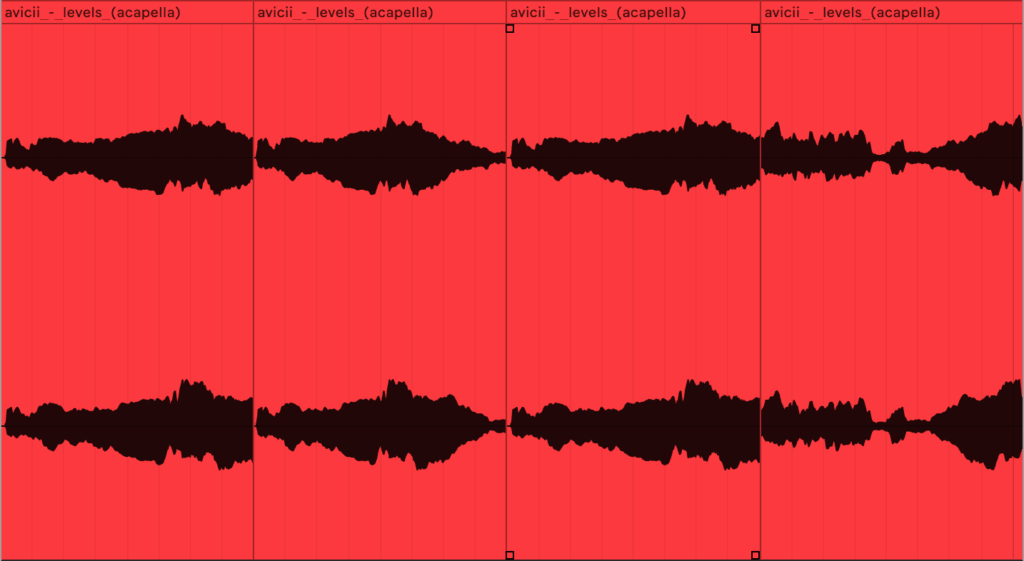
Taking this example further, if you've listened to some classic house before, you'll notice an iconic sort of rave-esque sampled chord sound. This is an incidental music theory technique called parallel chords, which is where the intervals between notes do not change.
In the case of sampling, the notes are embedded into the chord sample and cannot be changed, so changing the pitch will alter the pitch of all notes in the sample by the same amount.
Here what I mean in this example. At 1:37, the same chord sample is played up one semitone and down four semitones in alternation throughout the track:
Less is More
This universal truth is always important to come back to – less is more. What does this mean in terms of sampling? It means that leaving a sample in it's original form as much as possible usually works better than any sort of over-processing would.
Think back to the Ice Ice Baby example we gave earlier. It's nothing more than a sampled phrase from the original Queen track, with drums, a bass line and vocals. But it's a wild success and considered a classic.
The Next Step?
Now that you have all the information and resources you need to know to get started, close this article down and get to work. That's the only way you'll improve.
That being said, if you're inexperienced with production and don't know the fundamentals, check out our free video training from our founder, Sam, by clicking the link below.
Get Instant Access
Source: https://www.edmprod.com/how-to-sample/
Posted by: carterlithatinquir.blogspot.com
0 Response to "What Does It Mean to Sample a Song"
Post a Comment